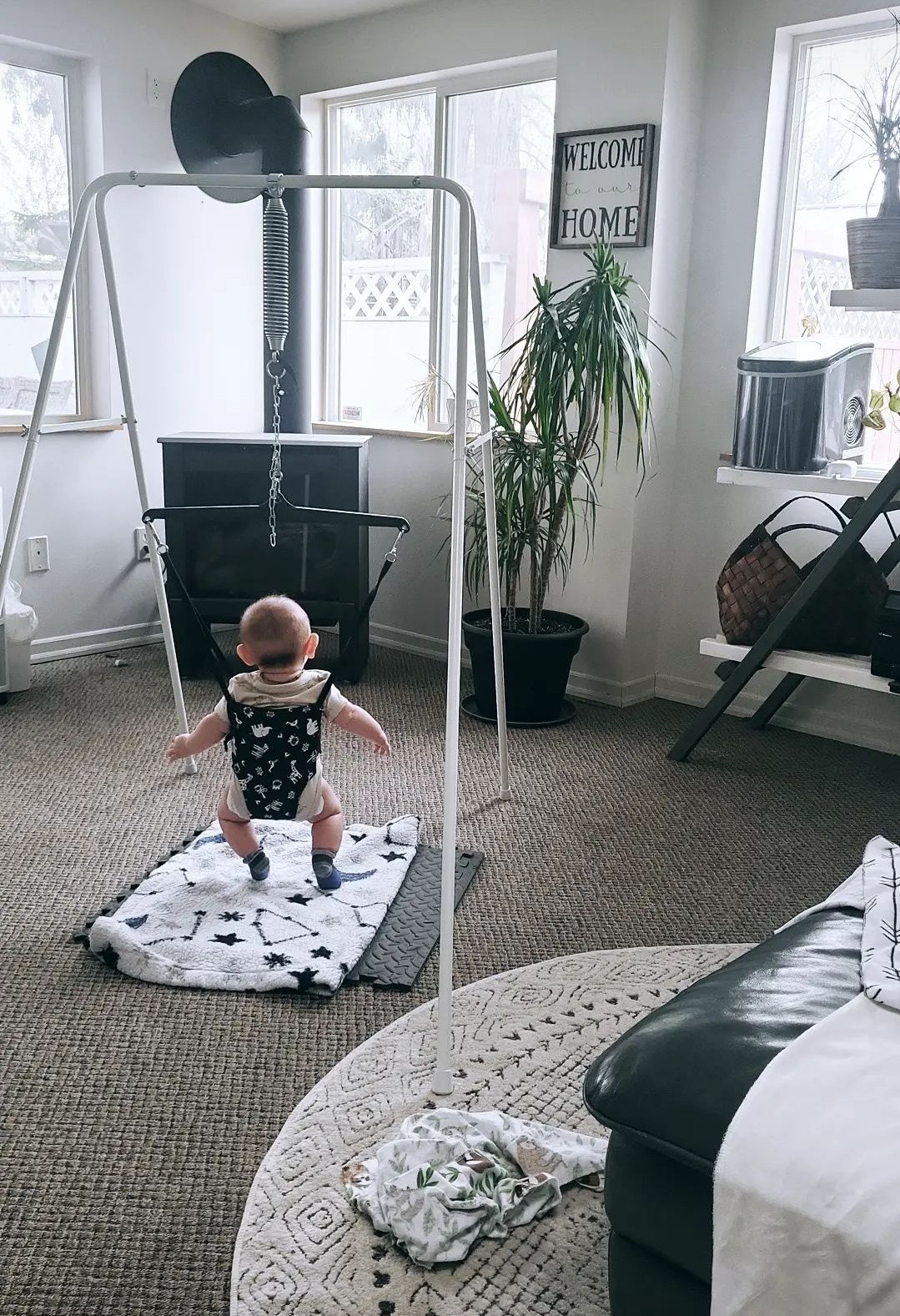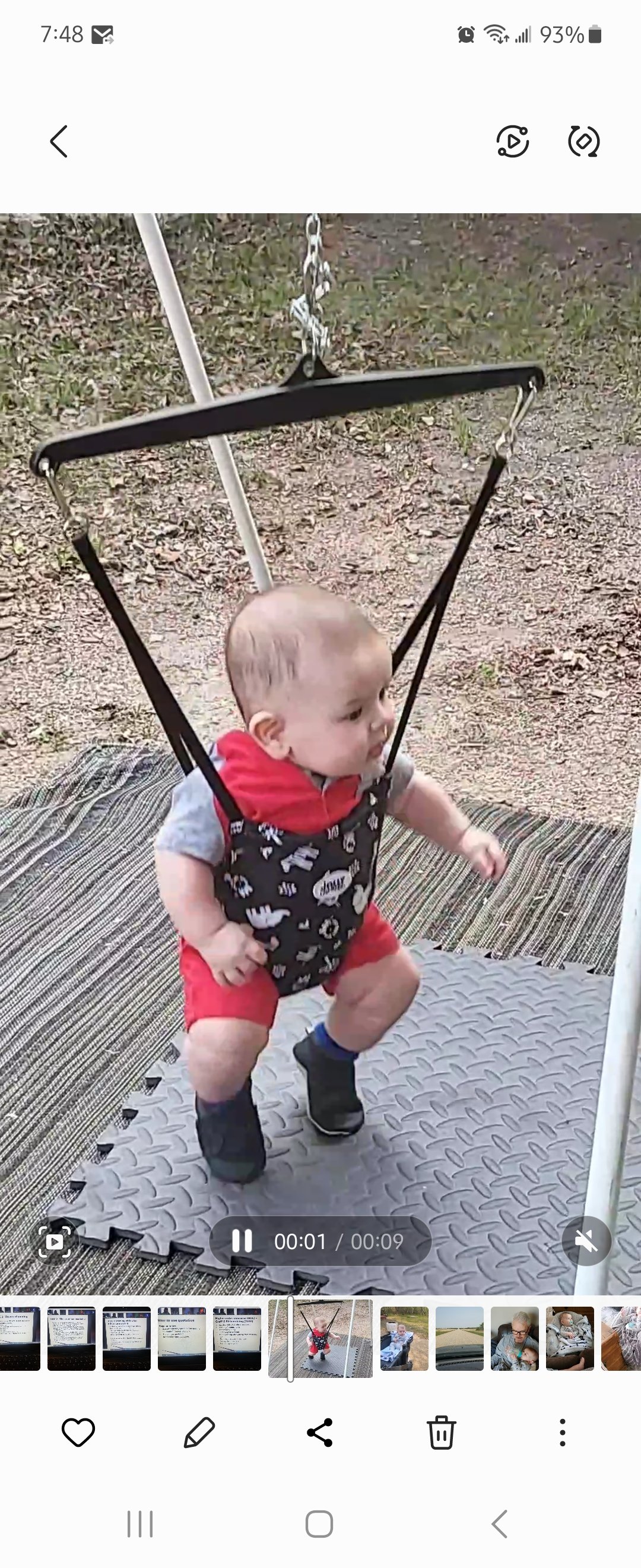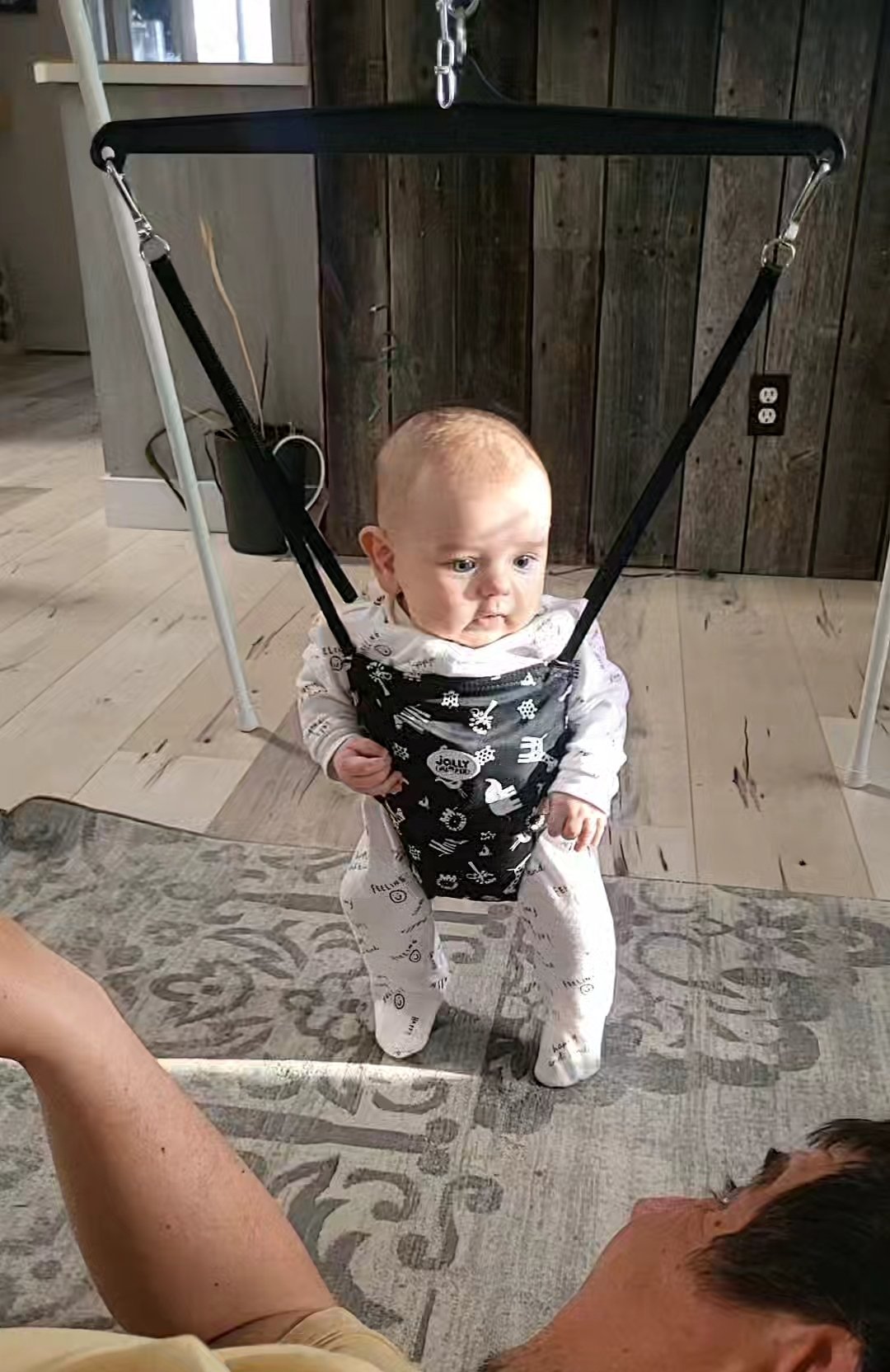The Jist of the Jolly Jumper
Invented by a Canadian Indigenous woman by the name of Olivia Poole, the Jolly Jumper has been around since the early 1900s. Its design came from women needing a way to take care of and entertain their children while also being productive. I could thank this woman daily for her ingenuity and brilliance.
Like other toys and baby mechanisms, the Jolly Jumper has age limits and recommended-use guidelines. Until Kolter was 10 weeks old I had not done any reading about our Jolly Jumper and had yet to open the box. I did notice, however, that my son was beginning to sit with his head up for as long as he wished and even began standing up when we would do our pull-to-sit exercises with him. He was becoming restless by 11 weeks and so I started looking into using our Jolly Jumper. The age recommendation states that babies should be 3 months old AND can hold their heads up independently with full neck support. See more FAQs here. Kolter fulfilled both these requirements and so, the following weekend, we decided to give the jumper a try.
Some kids take time to get used to being suspended or being able to see things upright. Some don’t enjoy the jumper and even cry while in it due to discomfort (this is rare) or not liking to jump. Kolter was neither of these.
We placed him in the jumper and sat back to see his reaction. We want him to explore the world at his own pace and try not to influence his thoughts or decisions - yes, you can tell if you’re influencing them or not at a few months old. We didn’t want to make the bouncing motion, we wanted to see if he would initiate it on his own. He did and within literal seconds of being in it.
After a minute or two he was smiling, bouncing away, and even letting out a giggle or two. Our hearts fluttered seeing him so happy. We took a quick video and shared it with some friends and family. My husband’s phone rang and we were immediately met with backlash that he’s too long, he’s going to be sore, we better not leave him in there too long, don’t leave him unattended, he’s going to hurt himself being that young in there. Our hearts were crushed. I knew he was fine. I knew my baby better than anyone and he was happy and safe. There is no way we were going to leave him alone in it or let anything hurt him - we’re not stupid. I was initially upset but soon told my husband I didn’t care what others were saying because I knew he was fine and I knew I was a good mama.
My parents were so excited to see him in the jumper and asked for pictures almost daily. In fact, they even went out and bought one so they could see him in one when he stayed at their place. I was relieved. My parents were also believers in doing what you know is best and not letting others dictate your decisions. This is likely why I strongly advocate raising my son the same way.
After just a few weeks, and me telling others they were outright wrong about my son being too young for the Jolly Jumper, things calmed down and everyone could see how much he loved it and how strong he was getting from using it. One thought was crossing my mind though… how long is too long to be in the Jolly Jumper?
Different manufacturers hold different opinions on safe time limits in the jumper. Some say 20 minutes, twice and day while others say 15 minutes. But why so short? Kolter could sometimes jump for up to 45-50 minutes and yell at you if you tried to take him out earlier. Turns out, hip dysplasia is a condition that can be caused by babies being placed into carriers, exersaucers, and Jolly Jumpers for too long, causing their hips to be misshaped. It is also said to impede on the natural development of crawling and walking. Honestly, my mother said I lived in my Jolly Jumper and I’m completely fine. I know that someone has to be the statistic and I believe in doing your research, but I also believe that if someone falls into a pond because they’re playing Pokemon Go it should not be ban from the world because of one person’s stupidity or lack of awareness. So I consulted a friend who is a physiotherapist, we’ll call him Dan. Dan said that there are cases where babies develop hip issues due to being in these types of devices for long periods of time but, from his understanding and research, these long periods of time are 4+ hours a day, every day because parents use it as a parenting tool or leave children unattended and let them sleep in them. I plan to do none of the above. Dan suggests letting your child tell you when they’re finished but that 45-60 minutes at a time, no more than twice a day is fine and that he has never encountered such issues on that type of timeline. He also says that manufacturers need to “cover their butts” so they will always print the minimum time. I’m going with this recommendation.
We let Kolt jump to his satisfaction which typically lasts around 40-50 minutes and his times are usually once in the early afternoon and once in the late evening before his final feed and then sleep. He tells us if he wants to get out and sometimes it is as short at 10 minutes. We never leave him unattended and his last check-up (this week) the pediatrician said he looked to be very strong and that nothing was out of place or functioning improperly. We’re pleased to announce we’re not horrible parents.
Stay tuned for more jumping and other adventures.





